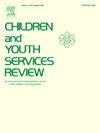青少年携带武器:犯罪相关风险和保护因素的横断面研究
IF 1.7
2区 社会学
Q1 FAMILY STUDIES
引用次数: 0
摘要
本研究利用undata在2021年和2022年进行的调查数据,研究了影响挪威年轻人携带武器行为的相关因素。本研究采用了“犯罪促进”模型和“恐惧-厌恶”模型两种理论视角,对犯罪风险因素和受害风险因素进行了探讨。研究结果表明,男性性别、较低的社会经济地位和较弱的家庭关系与携带武器行为显著相关。在基线模型中,学校关系呈负相关,但当加入恐惧和厌恶和犯罪促进变量时,学校关系变得不显著。此外,欺凌、暴力受害和犯罪行为,特别是暴力行为,成为了关键的预测因素。物质使用,如吸烟和大麻,也显示出显著的关联,突出了个人、社会和环境影响对这种行为的复杂相互作用。该研究强调需要采取多方面的干预战略,以减少青少年携带武器的情况,并为根据挪威国情制定的政策提供信息。这些发现有助于更广泛地讨论预防青少年暴力,强调早期干预和支持性环境的重要性。本文章由计算机程序翻译,如有差异,请以英文原文为准。
Weapon carrying among adolescents: a cross-sectional study of crime-related risk and protective factors
This study examines the correlative factors influencing weapon-carrying behaviors among Norwegian youth, utilizing data from the Ungdata surveys conducted in 2021 and 2022. By exploring both delinquent and victimization-related risk factors, the research adopted two theoretical perspectives: the “crime facilitation” and “fear-and-loathing” models. Findings indicate that male gender, lower socioeconomic status, and weaker family bonds significantly correlate with weapon-carrying behaviors. School bonds were negatively associated in the baseline model but became non-significant when fear-and-loathing and crime facilitation variables were added. Additionally, bullying, violent victimization, and delinquent behaviors, particularly violent acts, emerged as critical predictors. Substance use, such as smoking and cannabis, also showed a significant association, highlighting the complex interplay of personal, social, and environmental influences on this behavior. The study underscores the need for multifaceted intervention strategies to mitigate youth weapon carrying and informs policy formulation tailored to the Norwegian context. These findings contribute to the broader discourse on youth violence prevention, emphasizing the importance of early intervention and supportive environments.
求助全文
通过发布文献求助,成功后即可免费获取论文全文。
去求助
来源期刊

Children and Youth Services Review
Multiple-
CiteScore
6.30
自引率
6.10%
发文量
303
期刊介绍:
Children and Youth Services Review is an interdisciplinary forum for critical scholarship regarding service programs for children and youth. The journal will publish full-length articles, current research and policy notes, and book reviews.
 求助内容:
求助内容: 应助结果提醒方式:
应助结果提醒方式:


